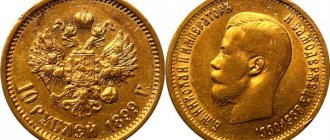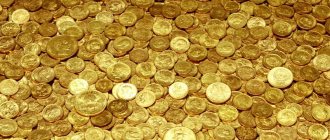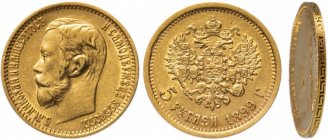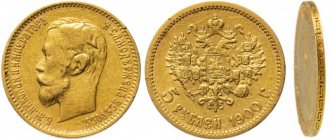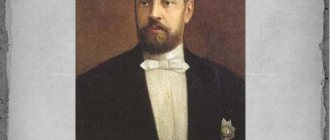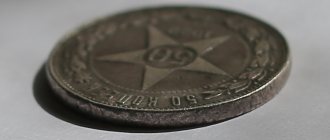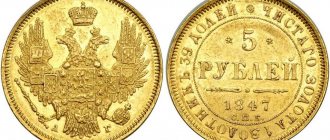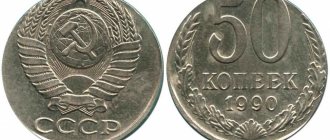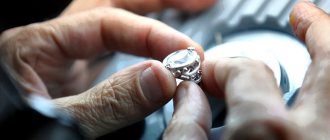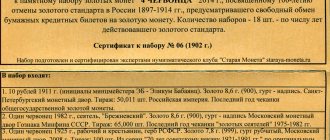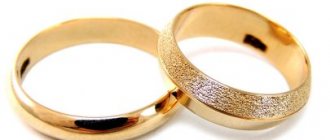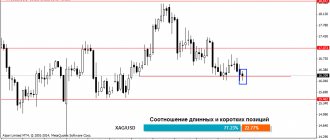The price of a 10 ruble coin from 1901 on the market depends on many factors. At the moment, the average cost in good condition is 30 thousand rubles , in poor quality - 22 thousand rubles , in excellent condition - up to 250 thousand .
This coin dates back to the times of pre-revolutionary Russia, when Nicholas II was the ruler of the empire. Minting coins and putting them into circulation was a more economically valuable process back then, so these days the main reason people collect such items is usually simply to add to a collection or to learn more about history.
The 1901 coin with a face value of 10 rubles is distinguished by the fact that it was the rarest and most valuable during the reign of Nicholas II Romanov. In addition, time passes, and now its cost is growing due to the fact that its age is more than 100 years . That is why at the moment the price is significantly higher than in previous years.
Historical period of coin issue
In order not to fall for the tricks of scammers, you first need to study history well. It is necessary to find out the years of reign of a particular emperor and the denomination of coins that were issued under him.
The initials of the head of the mint of the period of interest will also help you avoid buying a fake. Counterfeiters rarely bother to study history in depth. This is how money from the time of Peter the Great appeared, issued by the mint of Catherine II.
The front side (obverse) of the coin may not correspond to the back side (reverse). Trying to save money, counterfeiters produce reverses from different eras using the same stamp. Once again, one coin begins to combine data from different historical periods.
Therefore, the most common way to verify the authenticity of a coin is to study the information on the reverse and obverse of the coin and compare it with real data.
What does the cost depend on?
There are several known factors that most strongly influence the value of a coin:
- The safety of the goods is primarily assessed according to this criterion. As a rule, coins are considered from G condition (weak, worth up to 22 thousand) to MS (excellent, worth up to 250 thousand)
- Place of purchase - it is obvious that the same coin at auction and from the hands of an intermediary can be bought for different prices.
- Terms of purchase, delivery - some points are negotiated between the buyer and seller separately, and the price of the product varies depending on the decision.
- Year of purchase – at different times, prices for similar items rise and fall depending on demand. For example, the cost of this coin has increased significantly over the past few years.
Tooth and ear
Many are convinced that the authenticity of gold coins can be determined by the characteristic ringing sound that a coin makes when dropped on a hard surface. Indeed, different metals will make different sounds, but it is unlikely that an untrained person will be able to distinguish one from the other.
Of course you can practice. Take a real coin and a fake one and study the sound of each of them when in contact with a hard surface. In any case, it will be very difficult to carry out such an experience when purchasing.
The old folk method involves testing gold “to the point.” Gold metal is soft, so it will definitely leave marks from human teeth. This is true, but we must not forget that not only gold is soft. If the coin is made of lead, it will also show signs of damage.
And not all sellers will appreciate this method. If every buyer starts biting a coin, then after some time it will simply be eaten. Therefore, some collectors categorically do not allow the use of this method to verify the authenticity of a coin.
Approximate prices
Based on the above criteria, the cost of the same type of coin can vary dramatically. As a rule, coins that are in poor condition are sold at a price of 17 thousand rubles , but the price of those that are in complete safety sometimes reaches hundreds of thousands of rubles. Here is a list of the most common states of preservation of coins with corresponding prices:
- Excellent - 220,000 rub .
- Without damage - 40,000 rub .
- With minimal wear and tear - RUR 33,000 .
- There are scratches/scuffs - RUB 30,000 .
- With abrasions, the design may be partially invisible - RUB 22,000 .
It is very important to be able to distinguish a real copy from a fake. Sometimes sellers lower the price, passing off a fake as an original. The price of a non-original coin can even be in the range of 8,000-10,000 rubles .
Too high prices also do not guarantee that you are purchasing a genuine coin. Some experts argue that if, for example, the price of a coin in poor or average condition is more than 30 thousand, it was deliberately exaggerated.
Along the edge
On the reverse side of 10 rubles of 1901 there is an inscription:
“Pure gold 1 spool 78.24 shares of Federal Law.”
FZ are the initials of the mintmaster of the mint, Felix Zaleiman. During the period of issue of the coin, this position was also occupied by Alexander Redko; accordingly, some chervonets may have the letters AR at the end.
Counterfeiters often make mistakes when applying the inscription on the edge. Replicas are marked with the initials of people who never existed, or the word “pureAgo” is written in the modern version of “pure”.
History of appearance
The history of the golden chervonets of Emperor Nicholas 2 begins with the famous and very successful monetary reform of Witte. Money made from gold was not an innovation for Tsarist Russia. But never before have they played a key role in the monetary circulation of the state.
Under Nicholas II, coinage from gold was carried out in huge quantities. More than 2 million gold coins of 10 rubles, issued in 1901, were produced alone. In total, over 42 million coins of this denomination alone were issued between 1898 and 1911. Amount of money in denominations of 10 rubles. there were even more, but more precise data is lost, since the size of the circulation for 1909 is a mystery. More precisely, a blurry spot on the statement.
Stamp inspection
The State Mint of St. Petersburg minted coins. They were cast in China. On fakes you can notice traces of production that are not characteristic of the original, for example small droplets of molten metal. Chinese coins have a grainy texture that is covered with small bubbles.
The stamping on the cast coin is less detailed and accurate than on the original. The edging on the fake is made with a wave; on the original it has ribbing.
Having found a photograph of an original coin in a catalog, a person can easily determine the authenticity of the product being offered to him by its appearance. Some fakes are made with high quality and can deceive even professionals, but fortunately they are not common.
Where can I buy
Proven and optimal options for purchasing a coin:
- Auction – both on the Internet and in life there are a huge number of auctions. Sales there are carried out absolutely legally, in addition, the auctioneer guarantees the authenticity of the goods.
- An online store differs from auction sales only in that the price is fixed. However, there is a risk of being deceived.
- From private hands - some owners of this coin sell it themselves. These can be either just individuals interested in making a profit or collectors.
- Specialty stores - there is a chance of finding an item in one of the numismatic stores. They can usually be contacted by phone in advance to discuss the availability and cost of the coin.
Method five - weigh and measure
There are nominal parameters against which there is nothing to argue. For the original copy, remember, they are as follows:
weight - 8.6 grams
It may be a little less, for example 8.59. This is also considered normal, as it is associated with natural wear and tear. Here you will need special scales.
diameter - 22.5 mm.
This method is reliable and correct. It is difficult to calculate the density of an alloy when quantity rather than quality comes first. The goal of counterfeiters is to make more samples. There is simply no time to check the parameters and observe all the subtleties of technology.
Gold coins of Nicholas II. 5 and 10 rubles 1901
Nikolai Alexandrovich Romanov, Nicholas II - the last Russian Emperor, who stood at the head of the Russian Empire from 1896 to 1917, evokes mixed opinions from both professional historians and political scientists, and ordinary people interested in history. Moreover, these assessments are usually diametrically opposed: some consider him a weak, incompetent and weak-willed monarch, a “rag tsar,” while others, on the contrary, consider him an innovator, a patriot of the country and a brave experimenter, a “martyr king,” whose share was the difficult task of standing at the helm of the state in such a difficult time.
The last Emperor of the Russian Empire, Nicholas II
The period of his reign was indeed very ambiguous in its essence: on the one hand, the rapid economic and industrial development of the country, the rise of its general well-being and the well-being of the population, on the other hand, revolutionary movements, military failures and external pressure, unprecedented corruption, obvious political and social miscalculations . The shameful defeat in the Russo-Japanese War of 1905, which was planned as “small and victorious”, the revolution in the same year - although suppressed, but stirred up a much more global protest movement, bloody and consuming financial and human resources participation in the First World War - a completely unnecessary Russian Empire, and, as a consequence, a deep political crisis, which ultimately led to the abdication of Nicholas II from the throne. Who knows whether Nicholas II and his government are solely to blame for this, or whether this is the spirit of a fundamentally new turn of consciousness in the minds of humanity in those years and global social processes taking place in the world? After all, the same Marxism, the ideas of which ultimately led to the Bolsheviks coming to power, who turned Russia into a completely different state, arose in Germany. In the first half of the 20th century, in addition to the Russian one, 3 more empires ceased to exist, and revolutions and changes in political systems shook many countries.
Along with the sad, catastrophic outcome of his reign, the population of the Russian Empire nevertheless grew by almost 50 million people, the extraction of mineral resources increased significantly, the share of exports increased significantly, industry developed rapidly - the number of people employed in factories and factories under Nicholas II increased by 2.5 times! The Russian economy at the beginning of the 20th century demonstrated such a rapid growth rate that, had the world war not happened, who knows, perhaps it would have become the first economy in the world! But history does not know the subjunctive mood.
Nicholas II as a person
A wonderful family man, a brilliantly educated person, quite easy to work with and, at the same time, susceptible to the influence of other people. And Nicholas II was surrounded by personalities of different kinds - both patriots and professionals in their field, and selfish people acting in purely personal interests, to the detriment of the state.
According to contemporary reviews, he was a good-natured, gentle person, a clear patriot of the country, a supporter of the “Russian idea,” and in many ways an idealist and naive person. Was he a man of “strong hand”? Hard to tell. The decisions made by him and his entourage are very heterogeneous both in the degree of softness or harshness, and in the degree of will or lack of will. On the one hand, an order could have been given for tough measures, including shooting at crowds of protesters, on the other hand, some mysterious, confused sitting in Tsarskoe Selo while your power is not just in danger, but is collapsing before our eyes, along with your country.
Currency reform S.Yu.Witte
Sergei Yulievich Witte, one of the most effective statesmen in the government of Nicholas II, Minister of Finance of the Russian Empire from 1892 to 1903, and from 1905 to 1906 - Chairman of the Council of Ministers, began a monetary reform back in 1895, the purpose of which was to bring the national currency to a new level and bringing all banknotes to a single rate, which was achieved.
Minister of Finance of the Russian Empire, Chairman of the Council of Ministers Sergei Yulievich Witte
Surely, even for people far from numismatics, the phrase golden royal chervonets is a familiar term and evokes associations with something reliable and expensive.
The result of this monetary reform was the stability of the financial system, the influx of foreign capital and investment, and the rise in the value of Russian money, backed by the most familiar and reliable asset - gold.
Thus, after the Witte reform and until the beginning of the First World War, the value of one gold ruble was equal to 0.77 g of pure gold. For comparison, other “traditional” currencies of those years had the following “gold equivalent”: US dollar - 1.5 g, British pound sterling - 7.32 g, French franc - 0.29 g, German mark - 0.358 g.
If, in the pre-reform state, the amount of paper money in its total value amounted to almost 92% of the total money supply, then by 1914, among the money in circulation, more than 21% were gold coins, and more than 5% were silver coins.
With the outbreak of the First World War, the exchange of paper, silver and copper money for gold was stopped, inflation began, the ruble exchange rate fell, and the gold coins that people had in their hands began to be held “for a rainy day.”
Due to their actual value, royal gold coins circulated predictably during the Civil War and after it. Moreover, there is also information that there was a period when the Soviet government also minted old-style gold coins, and this was done for settlements with foreign countries. This continued until the appearance in 1923 of a new, already Soviet gold chervonets, the circulation of which, however, did not last long and was much less widespread than the circulation of the royal chervonets in pre-revolutionary Russia.
Russian Empire in 1901
The year 1901 in Russia, as well as the entire period of the reign of Nicholas II, was very contradictory - on the one hand, major successes in the economy and development of the country as a whole, on the other hand, failures in the foreign political theater - the transition of Manchuria to the control of China, unsuccessful diplomatic relations with Japan, which a few years later led to war, and growing social tension within the country - student protests and worker riots, which even led to the introduction of martial law in some cities, the murder of a minister by student Karpovich, a member of the Russian Social Democratic Labor Party (RSDLP) Bogolepov's enlightenment.
Revolt of workers of the Obukhov plant, 1901
Gold coins 5 and 10 rubles 1901
In 1901, two people became mintmasters - heads of the St. Petersburg Mint - Felix ZALEMAN, who held this position from 1899 to 1901, and Alexander REDKO, who became the head in 1901, replacing Felix Zaleman and losing it to Elikum Babayants in 1906.
Gold coins in denominations of 5 and 10 rubles, issued in 1901, have the initials of these two mintzmeisters on the edge - F.Z. and A.R., which is one of the signs for determining their authenticity, because often numerous manufacturers of counterfeit gold coins neglect a deep study of such nuances. Therefore, if you come across coins of 5 or 10 rubles issued in 1901 with any other initials on the edge, this clearly indicates that you have a fake in your hands.
On the reverse of the 5 ruble coin, issued in 1901, the coat of arms of the Russian Empire and the inscription “5 rubles 1901” are depicted; on the obverse there is the profile of Nicholas II and the inscription in a circle to the left of the profile - “B.M. (By the Grace of God) NICHOLAS II EMPEROR”, to the right of the profile – “AND AUTOCRET OF ALL RUSSIA.” The bead on both sides has raised teeth, pointed towards the center.
The coin is made of 900-carat gold, weighs 4.3 g (of which 3.87 g is pure metal) and has a diameter of 18.5 mm. The total circulation of 5 ruble coins issued in 1901 amounted to 7.5 million pieces.
Gold coin of 5 rubles, 1901
The edge of the coin is patterned with an acute-angled ornament and with the initials of the mintzmeister - F.Z. or A.R.
The letters “F” and “Z” on the edge of a gold coin worth 5 rubles, 1901
The letters “A” and “P” on the edge of a gold coin worth 5 rubles, 1901
Thus, there are 2 types of gold coins in denominations of 5 rubles, issued in 1901: among collectors they are called “5 rubles 1901 FZ” and “5 rubles 1901 AR”.
On the reverse of the 10-ruble coin, issued in 1901, the coat of arms of the Russian Empire and the inscription “10 rubles 1901” are depicted, on the obverse, as well as on the five-ruble coin, the profile of Nicholas II and the inscriptions in a circle to the left and right of the profile - “B.M. NICHOLAS II EMPEROR" and "AND THE AUTOCRET OF ALL RUSSIA." The collar also has teeth directed towards the center.
The coin is made of 900 gold, weighs 8.6 g (7.74 g pure metal) and has a diameter of 22.5 mm. The total circulation of coins in denominations of 10 rubles issued in 1901 amounted to 2.377 million pieces.
Gold coin of 10 rubles, 1901
On the edge of the coin there is the inscription: “PURE GOLD 1 ZOLOTNIK 78.24 SHARES” and the initials of the mintzmeister – F.Z. or A.R.
The letters “F” and “Z” on the edge of a gold coin worth 10 rubles, 1901
The letters “A” and “P” on the edge of a gold coin worth 10 rubles, 1901
As a result, as in the case of 5 rubles of 1901, there are 2 types of gold coins of 10 rubles issued in 1901 - 10 rubles of 1901 FZ and 10 rubles of 1901 AR.
